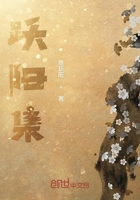We have already examined a certain class of fixed oils, which are obtained by crushing the seeds of certain plants. Our next business will be to turn our attention to another class, obtained in each case, not from the seeds, but from the fruit of the plant, and requiring heat as well as pressure in the process of extraction.
First among these stands palm oil, which is obtained from the fruit of the oil-palm, a native of tropical Africa.
The tree grows to a height of 30 feet, and the fruitfrom which the oil is obtained hangs in bunches, often 2 or 3 feet across. Each individual fruit is oval in shape, and the finest of them grow to about the size of a hen"s egg.
When ripe the fruit is quite smooth, and of a bright, golden yellow. It consists of a small hard nut, embedded in a soft, oily flesh. The oil is obtained by boiling the ripe fruit in earthenware pans, and then crushing the mass in wooden mortars.
Palm oil, as we see it in this country, is thick and solid like butter or dripping, but in the hot climates where it is produced it is liquid like other oils.
It is mostly used in the manufacture of soap andcomposite candles, and for lubricating the axles of railway-carriage wheels. The natives of Africa use it as we do butter.
Coconut oil is another of the fats, or solid oils. It is obtained from the fruit of the coconut palm, which is cultivated in most tropical countries, especially in the East and West Indies, India, and Ceylon, and in the islands of the Pacific Archipelago. The treehas a long straight stem, which towers to a height of 100 feet, and is crowned with immense drooping leaves, each leaf measuring about 15 feet in length. The fruit hangs in clusters at the very summit of the tree. It is an immense nut, the kernel of which is enclosed in a hard woody shell, with a thick, tough, fibrouscase outside. The oil, which at ordinary temperatures is a white solid fat, is obtained sometimes by pressure alone, but mostly by first boiling the kernels and then crushing them. It is largely used in the manufacture of soap and candles. It is the only fatty matter which willmake a soap capable of forming a lather with sea-water. We call it marine-soap.
To the natives of the countries where it grows, this tree is most invaluable. They use its wood to build and furnish their houses; the fibers of the husk and the long tough leaves serve as thatching material, and for making mats, baskets, ropes, brushes, and such things; the nuts themselves provide them with food; the milky liquid inside the kernel supplies their favorite drink; and they even make an intoxicating liquor called arrack from the juice of the flower.
Olive oil is the produce of the fruit of a tree which grows in the countries situated on both shores of the Mediterranean, and in California. It is an evergreen shrub, not more than 10 feet high, covered with long lance- shaped leaves, and bearing small, white, sweet-scented flowers, which are followed by fruit about the size of a small plum or damson. When the fruit is ripe, it assumes a dark purple color, and the flesh becomes oily, and rough, and bitter to the taste.
The oil is extracted by pressure in a screw-press. That which flows first, and with only a slight pressure, is considered the best. It is known as Virgin oil. The common kinds of olive oil are obtained by first heating the fruit, and then subjecting it to very strong pressure. This is thecommon sweet-oil, which is used for various household purposes. It is a pale yellow, inodorous liquid, and is very inflammable.
The best kinds of olive oil are used in the preparation of food, although to a much more limited extent with us than in the countries of Southern Europe, where it may be said to take the place of butter and cream, and is used at every meal.















